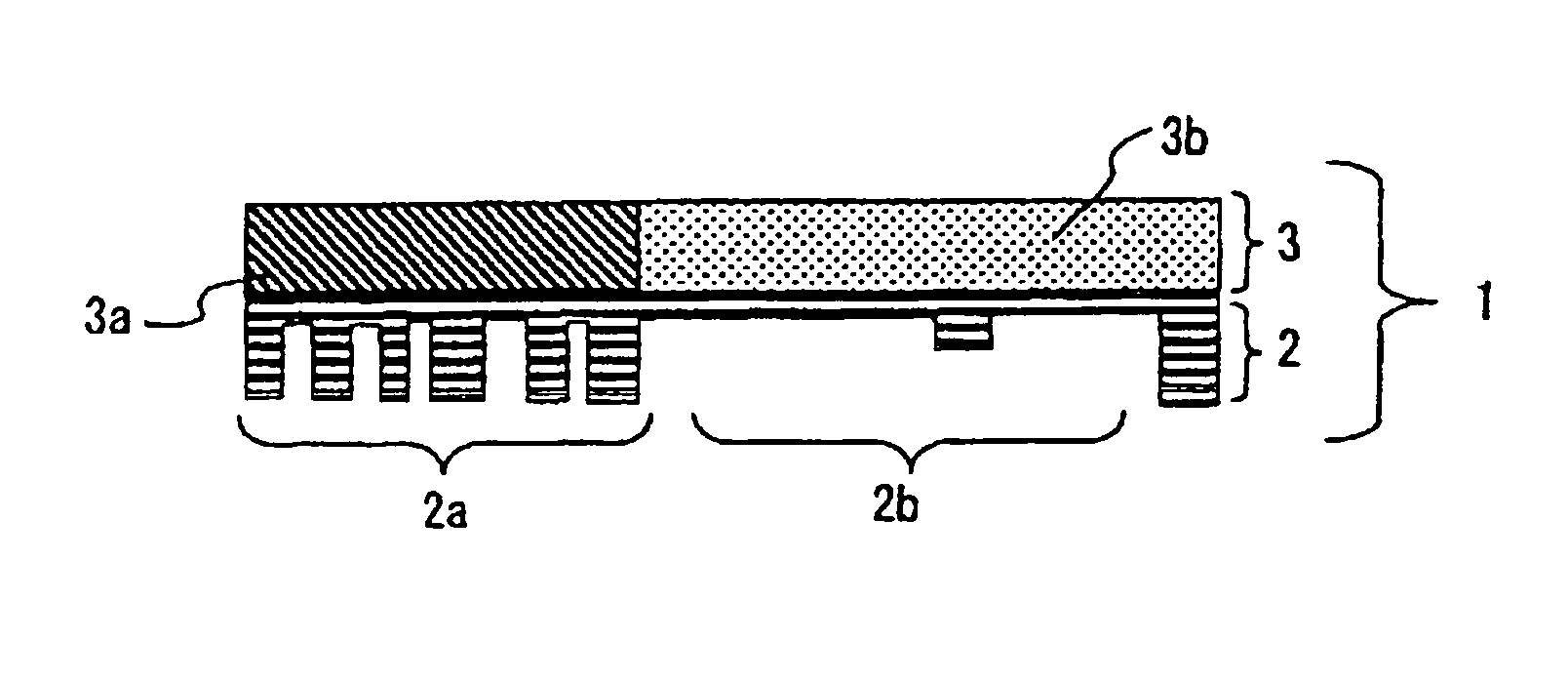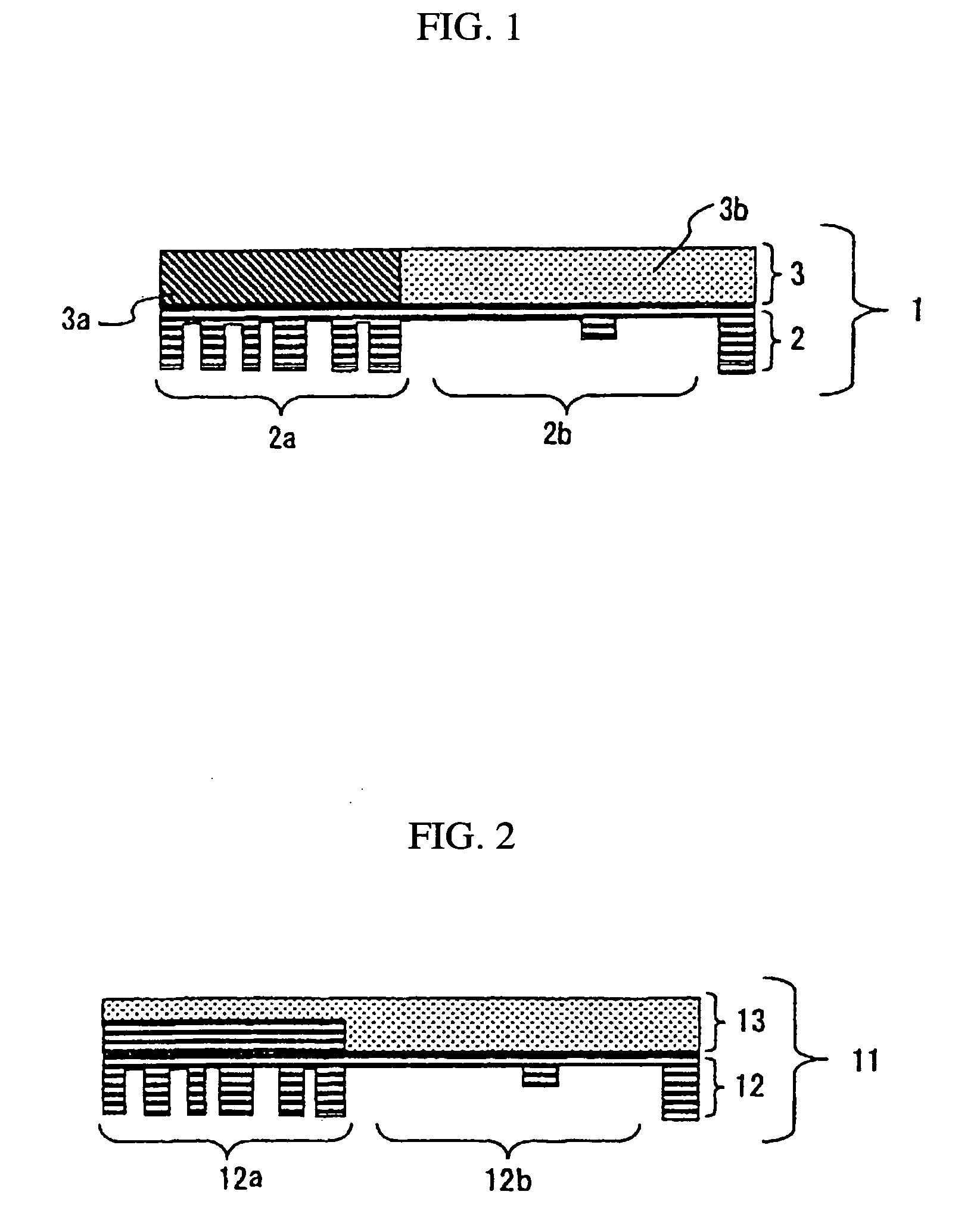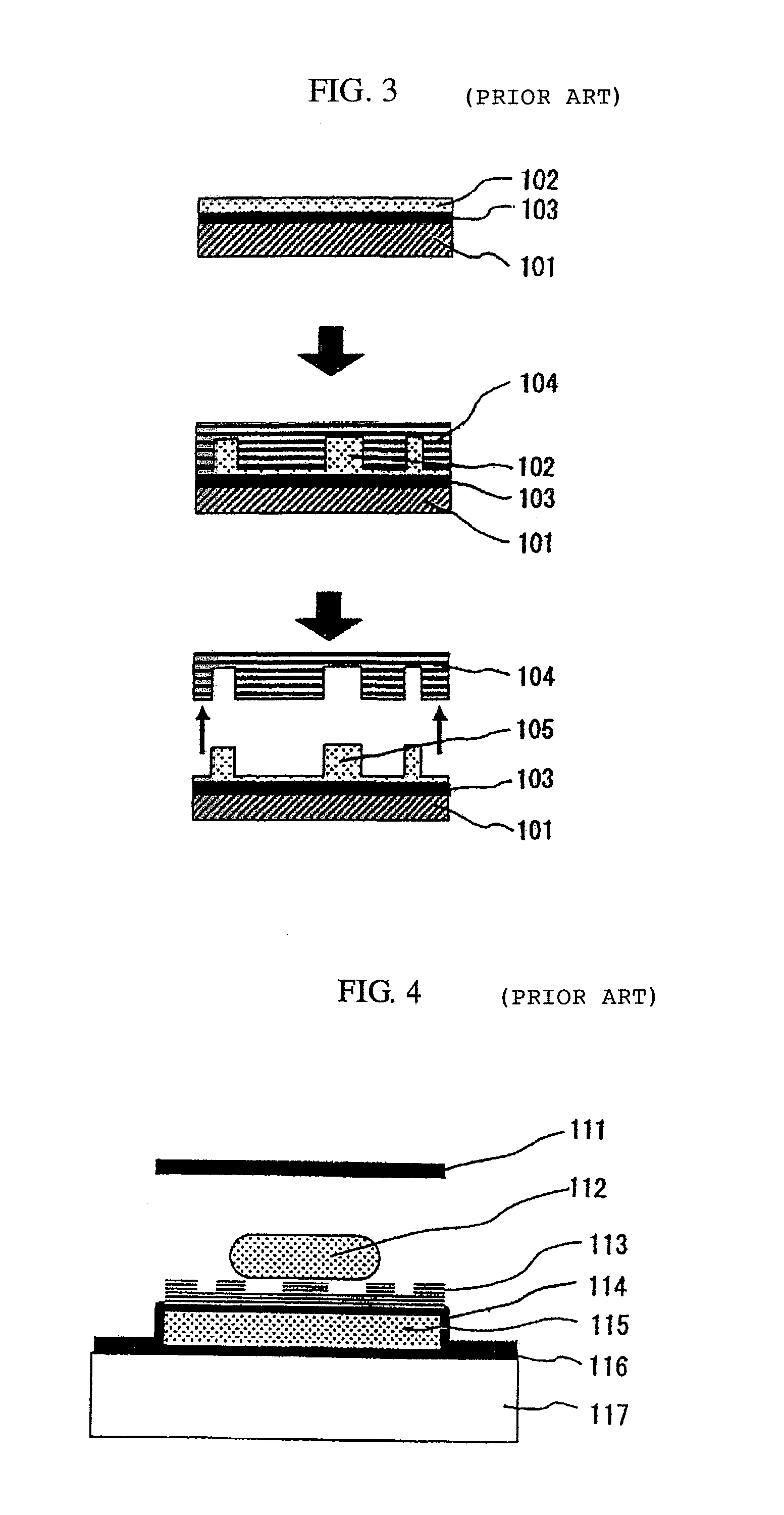Stamper and transfer apparatus
a transfer apparatus and stamper technology, applied in the field of stampers, can solve the problems of inability to accurately transfer fine structures on the order of micrometers, and the pattern on the stamper surface cannot be correctly transferred to the resin, etc., to achieve accurate transfer, high modulus of elasticity, and accurate transfer
- Summary
- Abstract
- Description
- Claims
- Application Information
AI Technical Summary
Benefits of technology
Problems solved by technology
Method used
Image
Examples
example 1
[0029]An embodiment of the invention will be hereafter described. FIG. 5 shows an example of a transfer process in one aspect of the invention.
[0030]First, an organic resin layer 202 of PMMA (poly(methyl-methacrylate)) was formed on a silicon wafer substrate 201 with a crystal orientation (100) and a diameter of 150 mm, using a spin coat method. The organic resin layer 202 had a thickness of 1 μm and a melting point of approximately 220° C.
[0031]FIG. 1 shows a stamper 1 used in the present embodiment. The stamper 1 comprised a flexible stamper layer 2 of a nickel-electroformed film and a buffer 3. The buffer 3 was patterned by a screen printing method such that the modulus of elasticity had a longitudinal distribution. Specifically, the buffer 3 is patterned with portions with a high and a low modulus of elasticity in accordance with the density of convex portions of the flexible stamper layer 2, such that a portion 3a with a high modulus of elasticity corresponds to a portion 2a of...
example 2
[0038]Another example of the invention will be described. FIG. 6 shows an example of a transfer process according to another aspect of the invention.
[0039]An organic resin layer 202 of PMMA with a crystal orientation (100) was formed on a silicon wafer substrate 201 with a diameter of 150 mm by a spin coat method. The organic resin layer 202 had a thickness of 1 μm and a melting point of about 220° C.
[0040]FIG. 2 shows a stamper 11 used in the present example. The stamper 11 comprised a flexible stamper layer 12 made of a nickel-electroformed film, and a buffer 13. The buffer 13 was patterned with various thicknesses in accordance with the density of the convex portions of the surface of the flexible stamper layer 2. Specifically, a portion of the stamper that corresponds to a portion 12a of the surface of the flexible stamper layer 12 that had more convex portions was formed to be thin, while a portion of the stamper that corresponds to a portion 12b of the surface of the flexible ...
example 3
[0048]FIG. 8 schematically shows a biochip 900. In a substrate 901 made of glass is formed a passage 902 with a depth of 3 μm and a width of 20 μm. A specimen containing DNA (deoxyribonucleic acid), blood, protein, or the like is introduced via an inlet 903 and is caused to flow in the passage 902 until it reaches an outlet 904. A molecular filter 905 is disposed in the passage 902. In the molecular filter 905, there is formed a projection assembly 100 measuring 250 to 300 nm in diameter and 3μm in height. FIG. 7 shows an enlarged view of the projection assembly 100.
[0049]FIG. 9 is a perspective view of the biochip 900 near where the molecular filter 905 is formed. The projection assembly 100 is formed in a part of the passage 902 formed on the substrate 901. The substrate 901 is covered with an upper substrate 913 so that the specimen flows inside the passage 902. In the case of a DNA chain-length analysis, while a specimen containing DNA is electrophoresed in the passage 90...
PUM
| Property | Measurement | Unit |
|---|---|---|
| Thickness | aaaaa | aaaaa |
| Structure | aaaaa | aaaaa |
| Flexibility | aaaaa | aaaaa |
Abstract
Description
Claims
Application Information
 Login to View More
Login to View More - R&D
- Intellectual Property
- Life Sciences
- Materials
- Tech Scout
- Unparalleled Data Quality
- Higher Quality Content
- 60% Fewer Hallucinations
Browse by: Latest US Patents, China's latest patents, Technical Efficacy Thesaurus, Application Domain, Technology Topic, Popular Technical Reports.
© 2025 PatSnap. All rights reserved.Legal|Privacy policy|Modern Slavery Act Transparency Statement|Sitemap|About US| Contact US: help@patsnap.com



